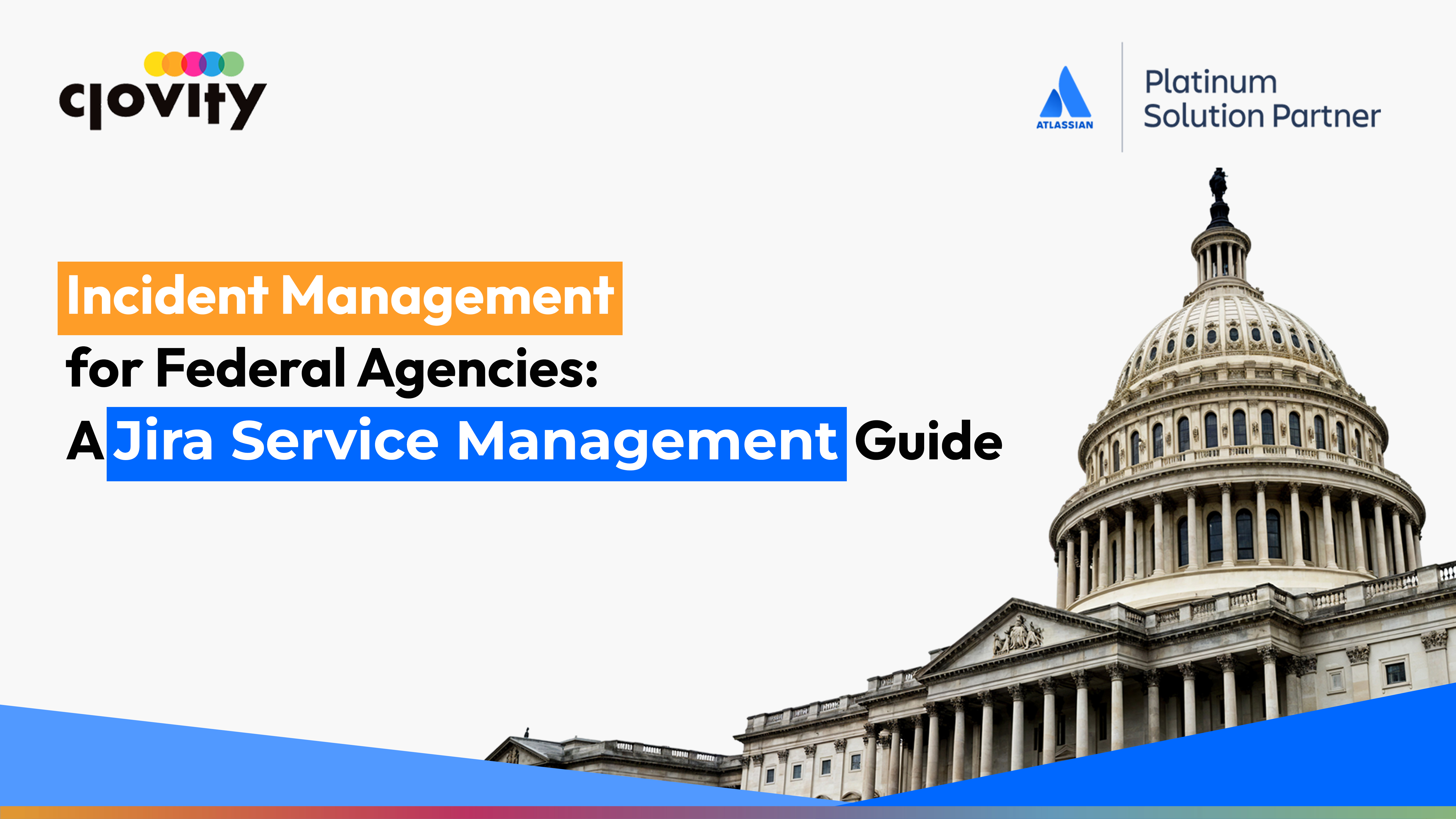Federal agencies operate in high-stakes environments where public service delivery, security, and compliance are non-negotiable. In such settings, incidents—whether IT outages, cybersecurity threats, or service disruptions—require a structured, transparent, and timely response. Jira Service Management (JSM) offers a reliable framework to help federal teams manage incidents from identification through resolution.
This blog outlines how federal agencies can configure and use JSM to meet their incident-management needs while aligning with security protocols and agency-specific requirements.
Why Incident Management Matters in the Federal Space
Federal agencies support mission-critical operations impacting millions. A delayed service or unaddressed security issue can lead to downtime, compliance violations, and public dissatisfaction. A robust incident-management approach offers:
- Faster response times
- Improved collaboration between teams
- Audit-ready documentation
- Predictable workflows under pressure
- Insights for prevention and planning
1. Setting Up JSM for Federal Use
Defining Incident Categories: Create request types for System Outages, Cybersecurity Alerts, Access Issues, Compliance Violations, Data-Integrity Problems, etc., to ensure correct triage.
Tailoring Workflows: Align with SOPs or NIST standards by adding steps for acknowledgment, classification (major vs. minor), root-cause analysis, and approval gates for sensitive changes.
2. Routing and Escalation
Queues & SLAs: Group incidents by priority or team and define SLAs such as “Critical security incident: respond within 15 min, resolve within 4 hrs” or “Major outage: respond within 30 min, resolve within 6 hrs.”
Automation Rules: Auto-assign by service area, trigger escalations on SLA breach, and notify stakeholders for critical incidents—reducing manual effort and enforcing policy.
3. Communication and Collaboration
- Internal vs. Public Comments: Keep private agent discussions separate from public replies to requesters when handling sensitive information.
- Linked Issues: Connect related tickets (change requests, problem investigations) to maintain visibility across the incident lifecycle.
- Major Incident Handling: Trigger dedicated workflows, notifications, and a “war room” in Jira + Confluence for coordinated documentation.
4. Integrating with Existing Tools
Monitoring: Integrate with Prometheus, Nagios, Datadog, or AWS CloudWatch to auto-create incidents from alerts.
SIEM: Connect Splunk or QRadar so security alerts generate JSM tickets.
IAM: Use Okta or Azure AD for SSO login and fine-grained access control.
5. Documentation and Review
Knowledge-Base Articles: Link or create Confluence pages for incident summaries, root causes, resolution steps, and preventive measures.
Post-Incident Reviews: Automatically prompt reviews documenting timelines, communication logs, and process gaps.
Reporting & Audits: Use JSM reports for SLA performance, resolution times, volume by category, and trend analysis; export and archive for compliance.
Meeting Federal Security & Compliance Needs
- Access Control: Role-based permissions to restrict sensitive incidents.
- Data Residency & FedRAMP: Choose Data Center for on-prem or US-hosted Cloud with FedRAMP compliance.
- Audit Trails: Every action—status changes, comments, assignments, SLAs—is logged automatically.
Common Federal Use Cases
- IT Help Desk: Centralized support for hardware, software, and access issues
- Security Operations: Tiered response for security alerts and incidents
- Facilities Requests: Physical-security or maintenance tracking
- Compliance Reporting: Documenting and escalating audit-related issues
- Change Management: Multi-step approvals for system changes
Getting Started with Clovity
Clovity designs, deploys, and maintains JSM environments for federal agencies, including incident workflows, monitoring integrations, audit trails, and team training.


